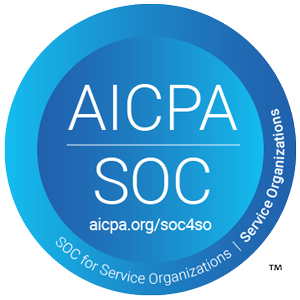Over the last few years I have seen Design Thinking tools used in all types of situations – as a management philosophy, an operational plan and a way to implement a “sexier” version of continuous improvement. Now Design Thinking is gradually becoming a staple of innovation programs – and could there be a better purpose for it?
What should companies focus on as they build their innovation practices? My experiences as a Corporate Strategist focusing on innovation inside companies like SAP, provide me real world experiences that may help you as you grow your innovation initiative. I have included my own views here on how to incorporate Design Thinking and create your culture of innovation to reap success.
What I wish I’d known on day one
The best advice I can pass along is “don’t do innovation in a silo, where it can only have a small impact.” For innovation to succeed it has to be part of a top-down strategy.
This is something I learned when we set up our innovation practice in the Office of the CMO in early 2015. Prior to that, marketing never had an official innovation practice – though innovation was happening in small pockets across our 13 teams.
With innovation happening on a very small scale – with one team getting two ideas per month, or so – it was harder to create a culture of innovation across the company. It wasn’t until Marketing introduced innovation as a strategy-driving aspect that the silos came down.
Innovation can’t be a one-time or stand-alone program. You need an end-to-end innovation strategy with high-level goals and a framework for measuring performance. And you want an Innovation Network with extensive reach. This is particularly crucial if your company is global.
And it’s why you need executive sponsorship in the early stages to get momentum going.
Defining key goals
The best way to get that support is to define goals that align with the overall direction of the company.
One of our goals in the Office of the CMO is to scale and make innovation a cultural phenomenon – which relies on a bit of a carrot and stick approach, which one finds at the heart of effective Design Thinking strategies. The stick lines up strategy with KPIs and performance management, and the carrot is about putting out inspirational programs, such as the Innovation Accelerator, to get the rest of the company involved.
I’ll say we’ve been great at pushing out big, top-down innovation – but we want to also succeed at what we call “emergent innovation,” which is a kind of new, grassroots innovation coming from the ground level. We want the 1200 people in SAP’s Marketing division – across six regions globally – to be part of our process.
We want the people who’d typically have zero visibility to be seen and heard – because otherwise, what ideas might we be missing out on? We want to invest in finding out, and then turn the best ideas into business results.
This is part of our strategy, which is built on People, Portfolio, Perception and Simplification – that’s the pipeline.
At the end of the day, we want innovation to be part of our DNA, our core strategy, and how we measure performance. And employee engagement is part of that. That’s why we introduced the Marketing Innovation Accelerator, which was the first program we rolled out to get employees engaged in contests.
But we had to set up innovation as a broad theme first.
About the contest creation process
After that, it comes down to education – and teaching everyone what innovation is.
This process taught us a lot too. Running contests helps map out roadmaps for innovation – from understanding how to build on employee education, to what it means to have a founder mindset. What we were doing on a smaller scale wasn’t working, so we learned what we needed, and created a strong Innovation Network.
From there we could empower everyone – from interns and ground-level employees on up – to innovate without friction. We start with submissions, then evaluation by crowd voting. The top five go to the pitching stage, which offers a rare opportunity to present to a panel of our highest executives.
And it’s working. The initial target for our last cycle was 30 ideas – and we had 81 submitted around the world. Of the top five ideas chosen last year, we funded three – but this year we’re funding all five.
Ideas that don’t make it to the executive round don’t have to necessarily die. Other teams might be interested if they only knew about them – so we’re looking at using a Kickstarter style platform for others to find their “passion projects.” That way we have the chance to get even more out of the ideation process.
Shining a light on your innovation program
Ultimately it does come down to communication, and letting employees know that innovation is happening, and that they can contribute – and that they are critical to the program’s ultimate success. Top-down communication from the C-suite, or leadership emails, are key for generating initial awareness. After that it’s a delicate balance – with the core team you want to over-communicate, with employees you don’t want to be “spammy.”
Whatever you do, always capture photos, videos and personal quotes with live events. And celebrate the short wins, because that’s what keeps the excitement going as you gear up to grow.
Focus on quality over simplicity
It won’t always be easy, but sometimes the hardest things are most rewarding, for example, with challenges. With our first cycle, our problem statement was really broad – and anyone who had an idea to contribute to our KPI could.
What we’re doing now has a greater focus on advocacy. Our last problem statement took two months to draft because it was super specific, with research data to back it, and the CMO signing off.
The first round brought in a lot of ideas; the second round inspired more questions, and needed more education. However, the results for the second round were really specific and spot on. So it’s worth the greater effort to hit your target the way you want and really focus on that Design Thinking approach.
A word about ROI
There were lots of lessons like that – like understanding we needed soft as well as hard incentives. Soft are things like individual opportunities – money to put someone on a global stage, for instance. Hard incentives are more on the performance management side – reasons to build innovation into this year’s KPI, or to have managers allot time for their teams to participate.
And you’ve got to measure everything to know what makes the biggest difference.
But all of these obstacles are surmountable when you embrace innovation as a cultural shift rather than a stand-alone program – and it’s much harder to grow if you don’t.
In the end, it takes an intentional, top-down commitment to make that happen.
But the payoff is worth it.
I’d love to hear what you find works for you! Please comment below or reach out to me.
I work closely with Kuhan Milroy who you can find on Brightidea’s Innovation Insights Google Hangouts which covers some of the ways to be successful with your innovation initiative:
Innovation Programs: Greatest Predictors of Success
Corporate Innovation 101: How We Got Started
Innovation Programs That Scale
Vivienne Wang, is a guest blogger, and Innovation Practice Lead at SAP Marketing Strategy & Transformation, Office of the CMO. Vivienne is a former software engineer who worked at GE and IBM before SAP.


